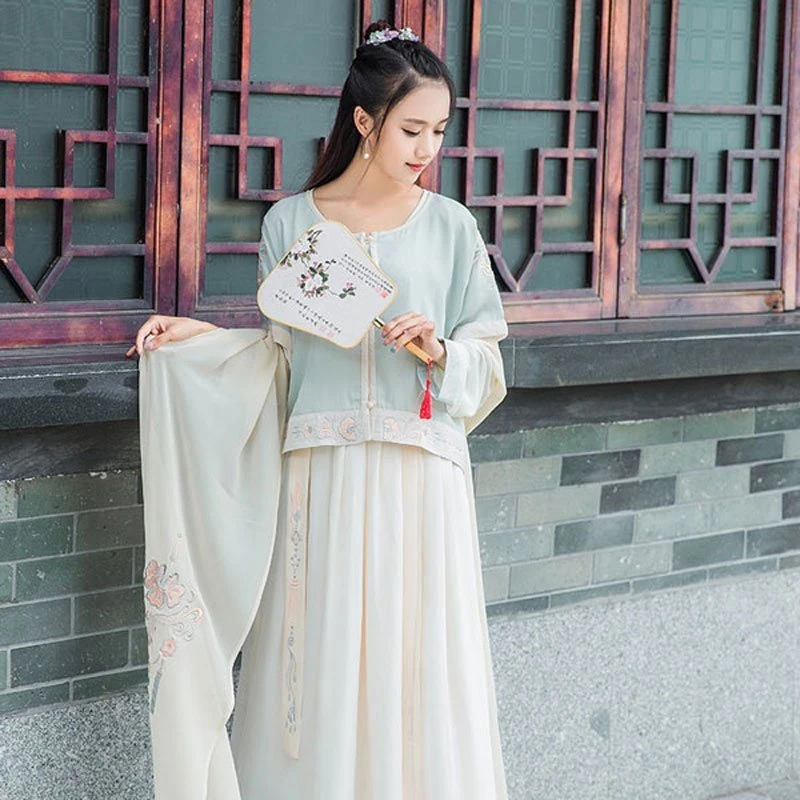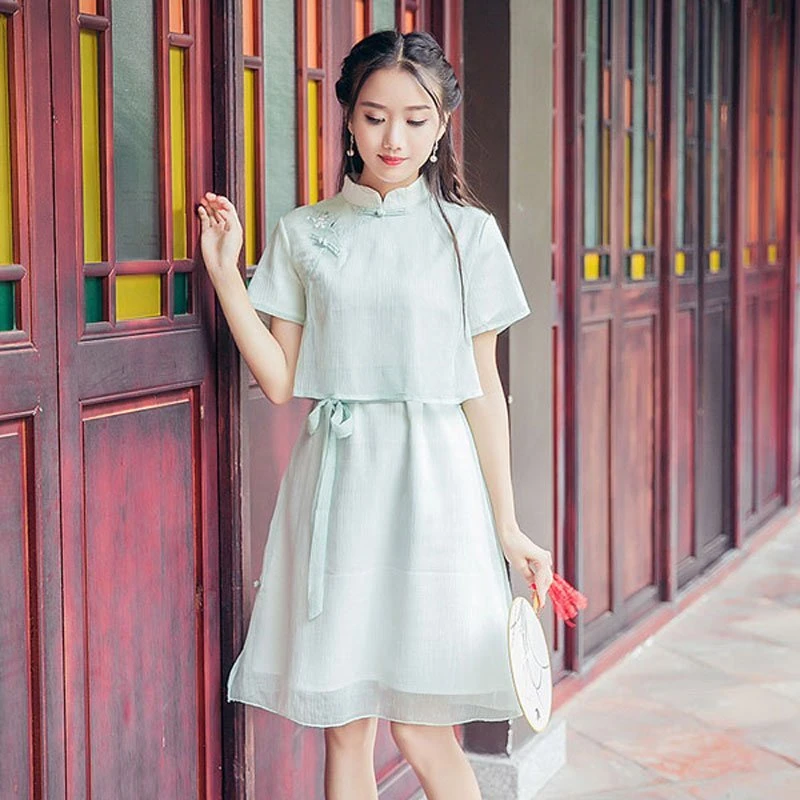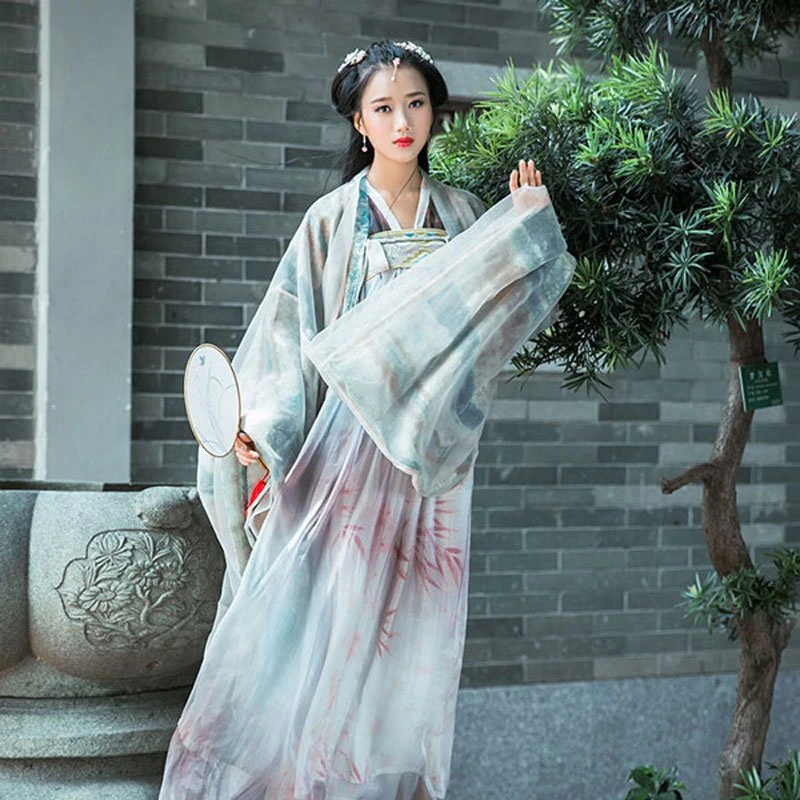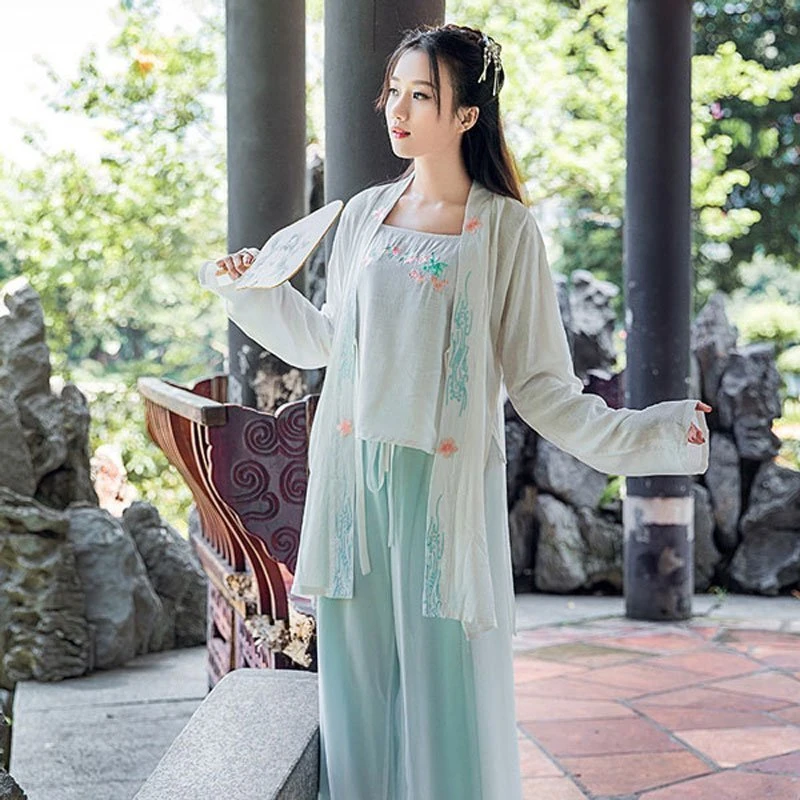In modern times, there are many ways to cut clothes, forming different costumes, such as short sleeves, skirts, pants. Hanfu also has several different cutting methods. The following is an introduction to everyone.
Yishangzhi(衣裳制, yī cháng zhì)
In ancient China: Yi(衣) is an upper outer garment, Chang(裳) is an underskirt (clothing worn in the lower body). Yishangzhi is due to the ancient people’s worship of the heavens and the earth.
It is the most basic and most orthodox form of ancient Chinese clothing. It originated in the Yellow Emperor era and has been passed down for thousands of years in ancient Chinese society.

Lianshangzhi (连裳制, lián cháng zhì)
Lianshangzhi is also known as "Shenyizhi(深衣制)", in order to adhere to the clothing system that is separated from the top and bottom, specially divided and then integrated into one. Lianshangzhi is originated from the early Qin Dynasty. Although it is a long coat, however, when cutting, the top is separated from the lower skirt, and then stitched together to express respect for the traditional concept.

Tongcaizhi (通裁制,tōng cái zhì)
Due to the inconvenience of movement in frequent social activities, the style of Hanfu men has evolved from Yichangzhi to Shenyizhi, it’s still troublesome to cut and splicing separately, then it developed into a Tongcai gown. In the Eastern Han Dynasty, there has been a tongcai long coat called "Changyi". As a new thing, there was no customization at the time in terms of length. The bold and open Sui and Tang Dynasties began the third style of Chinese clothing, in the Song Dynasty and the Ming Dynasty, the tongcai style Paoshan(袍衫) and Beizi(褙子) are very popular.
In general:
- Yishangzhi is separately cut and worn separately,
- Lianshangzhi is separate cut and sews together,
- Tongcaizhi is whole clothes tailored.
The tailoring style of Hanfu is more and more suitable for wearing and living activities.



Thanks👍